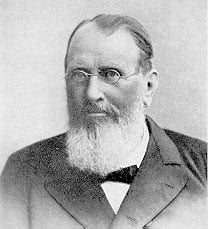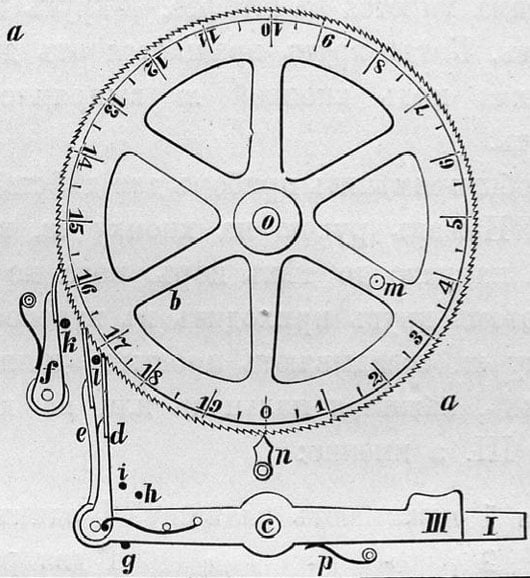While Friedrich Arzberger worked in mining and as a professor, he has a footnote in history for having created one of the first adding machines with keys. This device, which was widely believed to be an experimental model, had only two keys, one and three.
Who Was Friedrich Arzberger?
Friedrich Arzberger was an Austrian engineer and professor. While he wrote several publications for his work on imaginative gravity escapement and served for decades as a professor in mechanical technology, he’s most known for his invention of an adding machine with columns.
Quick Facts
- Full Name
- Friedrich Arzberger
- Birth
- November 14, 1833
- Death
- August 3, 1905
- Net Worth
- Unknown
- Awards
- Knight of the Leopold Order
- Children
- Dr. Johann Arzberger, Wilhelmine Klara Auguste von Schwind
- Nationality
- Austrian
- Place of Birth
- Vienna
- Fields of Expertise
- [“Mechanical Engineering”,”Technology”,”Mining”]
- Institutions
- Polytechnic Institute, Bergakademie, and Montanlenhranstalt
- Contributions
- Column adding machine (addirmaschine)
In the 1860s, Friedrich Arzberger constructed one of the first early column adding machines with keys. It was designed after the pioneering machines of James White, Luigi Torchi, and Jean-Baptiste Schwilgué, although it possessed only two keys — for 1 and for 3. He constructed it with two keys instead of 10 to reduce the probability of user error. The device is believed to have been an experimental work and was probably a small plaything for Arzberger.

Early Life
Friedrich, known more commonly as Fritz during his life, was born on November 14, 1833. His parents were Johann Arzberger and Wilhelmine Josepha von Schwind, his second wife.
Fritz’s mother was the sister of Moritz Ludwig von Schwind, a famous Austrian painter. His father was a technologist with a passion for mechanics. Johann Arzberger is best remembered for his innovations in street lighting and steam car construction in the 1820s. He died of apoplexy on December 18, 1835, leaving two-year-old Friedrich with his mother.
Friedrich’s mother, Wilhelmine, died the next year, in 1836. He was raised by his uncle, August Freiherr von Schwind, who was a high-ranking Austrian government officer.
Friedrich grew up playing with his father’s tools. He joined his uncle in the salt mines of Bad Aussee during The Revolution of 1848. Starting in 1851, Friedrich began his education in Vienna at the Polytechnic Institute. He went on to Bergakademie (Mining College) in Schemnitz and Leoben, where he studied mathematics and chemistry in particular. In 1856 Arzberger graduated from the Mining College in Leoben.
Career
Friedrich had two distinct careers but is best known for his inventions. He worked in mining engineering and as a professor throughout the course of his life.
Mining Engineer
After spending some time from 1856 studying mines throughout Europe, in 1861 Arzberger became a control officer of the Imperial Mining and Metallurgy in Jenbach. In 1863-1866 he managed the operation of two blast furnaces in Vordernberg.
Professor
In 1866 Arzberger started his career as a professor, initially in Bergakademie (Mining Academy) in Příbram, then as a professor of mechanical technology in TU Brünn (now Brno, Czechia). Later, until 1892 he was a professor at the Vienna Polytechnic Institute.
What Is Friedrich Arzberger Known for?
Friedrich was a successful mining engineer and professor, but his legacy lay in his column adding machine and imaginative gravity escapement innovations. He wasn’t the first inventor of an adding machine and likely used his device only for experimentation, but his contribution to the technology is still significant.
Imaginative Gravity Escapement
As a lifelong clock enthusiast, Friedrich wrote several publications on electrical clocks and escapements. An escapement is a necessary part of a pendulum clock that converts the energy of the weight of the falling drive into impulses. These impulses are essential for keeping the pendulum moving.
Column Adding Machine
Perhaps more significantly, his creation of a two-key adding machine with columns was another small step toward modern calculators. The device consisted of a plate that could be put in a tilted position using a wedge. On the plate was mounted a rotatable 200-teeth ratchet wheel. The two keys were mounted on a common axis. A spring returns the key to the initial position after depression.
One of the first adding machines was credited to Wilhelm Schickard in 1623. These basic adding machines would be slowly improved until 1954 when IBM introduced the IBM 608 as the first all-transistor calculator.

It’s important to note that entering numbers on Arzberger’s device would have been quite cumbersome. Entering one number would have entailed pressing keys one and three in a particular sequence. As mentioned above, the inventor indicated that he only included two keys in order to reduce the probability of user error.
Arzberger’s adding machine (Addirmaschine) was included in the scientific journal Schweizerische Polytechnische Zeitschrift, Volume 11, Issue 2 in 1866.
Friedrich Arzberger: Marriage, Children, and Personal Life
Friedrich’s father wasn’t the only fellow inventor and engineer in the family. His younger brother, Moritz Arzberger was also an engineer and inventor. Learn more about his marriage, children, and personal tragedies.
Marriage
Unlike his father, Friedrich would only marry once. His wife was Maria Arzberger, formerly Westhauser. She lived a long life and died just two years before him, on February 20, 1903.
Children
Friedrich and Maria Arzberger had two children. Their first-born son, Dr. Johann Arzberger, known as Hans, was born on November 26, 1862. He died on March 23, 1946. Their daughter, Wilhelmine Klara Auguste von Schwind, was born on June 29, 1864, and died on November 27, 1894.
Tragedy
The most significant tragedies of Friedrich all included deaths in the family. He not only lost both his parents by the age of three but he was preceded in death by his daughter and wife.
Friedrich Arzberger: Awards and Achievements
Friedrich is remembered for his adding machine invention. In his time, however, the most important distinction he received was being recognized as a Knight of the Leopold Order.
Knight of the Leopold Order
Founded in 1808, the Austrian Imperial Order of Leopold began as just three grades: Knight, Commander, and Grand Cross. It was further separated into four ranks in 1901: Knight, Commander, First Class, and Grand Cross. Friedrich was recognized as a Knight for his contributions to electrical clock development, imaginative gravity escapement, and some medical instrument innovations.

